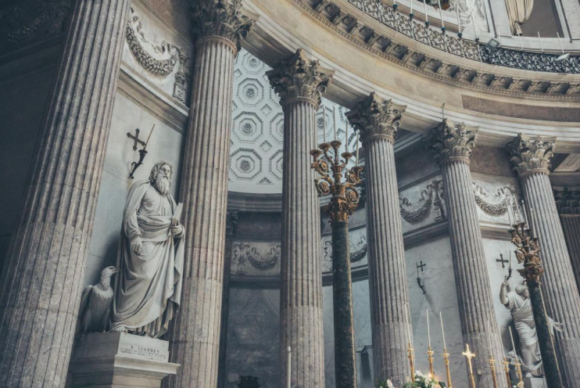San Francesco di Paola
The Basilica of San Francesco di Paola, located in the center of the curved side of Piazza del Plebiscito, is one of the most important examples of neoclassical architecture in Italy. The history of this basilica begins with the history of the piazza when in 1809, Gioacchino Murat, during the so-called “French decade”, decided to demolish the convents of Largo di Palazzo (the current Piazza del Plebiscito).
Architect Leopoldo Laperuta was entrusted with the construction of the semi-circular portico supported by 38 giant Doric columns, which was to face the Royal Palace and refer to the ancient tradition of arcaded squares. In 1815 once the supremacy of the Bourbons had been restored, Ferdinand I of the Two Sicilies decided to build the basilica as a thank-you to San Francesco di Paola for the reconquest of the kingdom and as compensation for the destruction of the ancient convents.
Saint Francis had lived in Naples a long time before. He lived in Paola (a small town in Calabria) and was invited to Naples in 1481 by King Ferrante I of Aragon at the insistence of the King of France Louis XI, who had received numerous rumors about the monk’s sanctity. The pious religious Francesco was received with great honors by the king who chose to live in a small room that still exists today in the Palace of Castelnuovo.
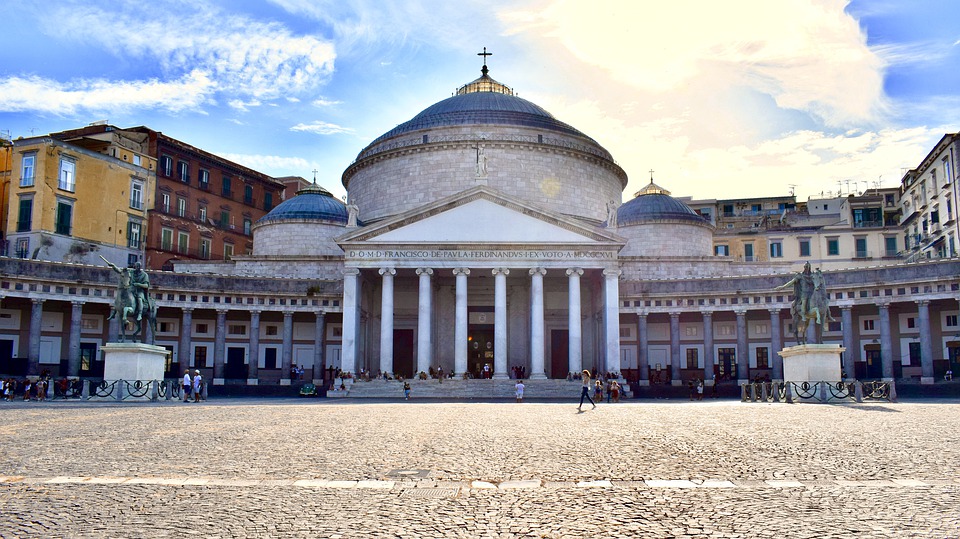
During this residence, the King asked him to find a convent in Naples. The Saint chose a solitary and then ill-famed place overlooking the sea, on the northern slopes of Mount Echia (today’s Monte di Dio area). The friar during the construction of the convent also prophesied that that place would soon become the most important and populated center not only in all of Naples but in the whole Kingdom. When the convent was completed, a church dedicated to St. Louis was also built next to it due to the presence of a chapel that existed at the time.
In 1817 a new competition was launched, won by the Swiss architect Pietro Bianchi from Lugano, one of the best artists of the era of
the neoclassical school, to erect the current Basilica on the ancient area of the old church of San Luigi di Palazzo and decided to
name it in honor of St. Francis of Paola.
The hemicycle of the church was further embellished by creating eight statues of Egyptian lions by Bianchi himself. The works were completed in 1824. Due to its circular shape, the basilica is reminiscent of the Pantheon in Rome. The facade is preceded by a pronaos formed by six columns and two pillars of the Ionic order, which support an architrave on which the dedication to San Francesco di Paola is carved.

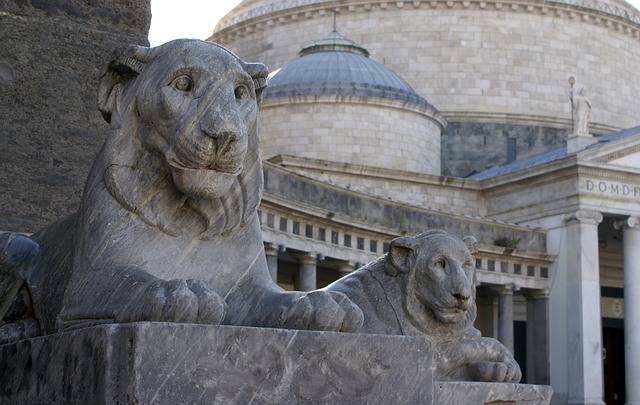
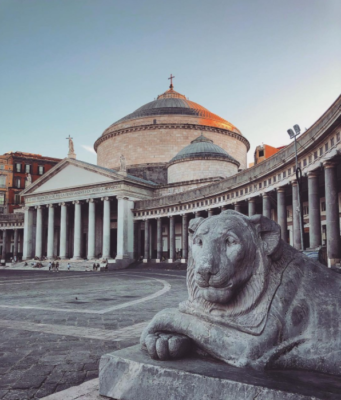
The pronaos is surmounted by a tympanum at the top of which are placed the statues depicting the Catholic Religion, between San Francesco di Paola on the left and San Ferdinando on the right. In the portico, there are, instead, the statues of the four cardinal virtues and the three theological virtues.
On the sides of the staircase there should have been two statues representing the Pietà and the Constance, but it was decided instead to arrange the two equestrian statues in the square. King Ferdinand, the work of Antonio Canova, and Charles III of Spain, the work of Antonio Calì. The church is surmounted by three domes: the central one is 53 meters high.
Entering the space of the basilica we immediately notice that the central rotunda is surrounded by a continuous Corinthian colonnade of thirty-two Mondragone marble columns that support an imposing central dome, decorated with lacunars and limestone rose windows. The 32 Corinthian-style columns that support the Dome and form the base of the cylinder (the central rotunda) are 11 meters high, between eight pillars of equal height arranged in equal distance to form around the six chapels and the eight niches with eight statues. of marble.

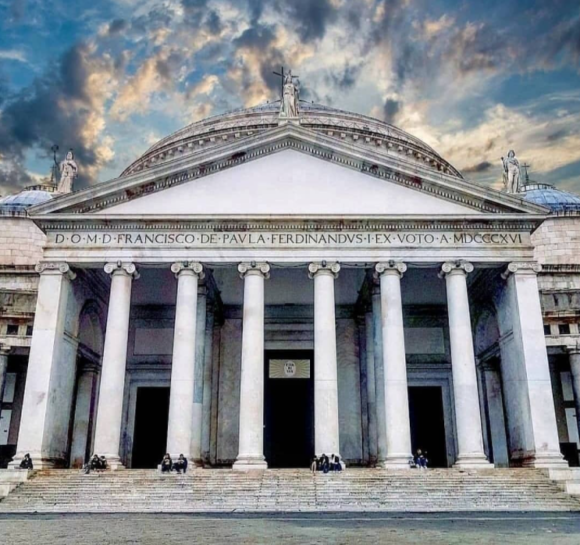
The church is embellished and enriched with numerous sculptures and paintings from the 1800s. As you enter the basilica you find yourself in an atrium from which you can access two side chapels; on the right, the environment is enriched by paintings by Neapolitan neoclassical artists. Along the perimeter, there are six side chapels.
Among the chapels resting on pedestals, there are eight sculptures of saints. Both on the left and the right side there are three chapels: on the left, these are adorned with paintings. In front of the entrance, we find the apse with the precious main altar, rich in precious stones. On its sides, there are two columns in Egyptian breccia used as candelabra (from the church of Santi Severino and Sossio) and two angels in the gold coating.
On the wall, there is the canvas depicting San Francesco di Paola resurrecting a dead by Vincenzo Camuccini. In the first niche on the right, there is a painting copied from an original by Van Dyck depicting Christ Crucified, executed by Tommaso De Vivo who is also the artist of the canvas placed on the adjacent altar with the Deposition of Christ in the Sepulcher, copied from a famous work of Caravaggio. The floor, with its complex geometric design, was designed by Pietro Bianchi with the use of various marbles.
